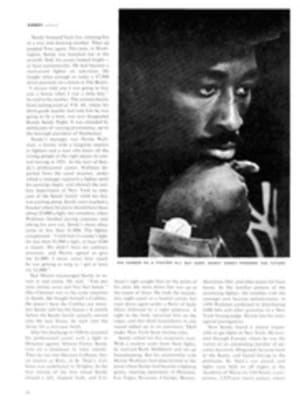
Owls in the gantries
Seventy-two members of the Indian River Audubon Society, meeting in the Presbyterian Church of Rockledge, Fla., were listening to a bird talk by a guest speaker when a deep, rumbling sound rolled in through the windows. "Rocket!" yelled a man in the back row. Moving with the unison of a flock of starlings, the entire audience dashed out of the church and stood gazing skyward as a great rocket roared up from Cape Canaveral, across the way. The bewildered speaker waited silently on the platform until the rocket climbed out of sight, and the audience trooped back in for the rest of the lecture.
This dash for the door is standard procedure for the bird watchers of Canaveral, who refer to their rocket gazing as "illegitimate bird watching" and spend almost as much time at it as they do in watching real birds.
Oddly enough, the double interest is shared by the men who work on the rockets across the way. Recently the space probers announced plans to make 26,000 acres of the 77,000 being added to the base for Nova, the moon shoot project, into an official bird refuge—a buffer zone between the biggest of all launching pads and the populated area that extends along the coast to the west.
This benevolence toward birds on the part of the Air Force and the National Aeronautics and Space Administration has been demonstrated on numerous occasions. Once, for instance, a blackbird was found to have built her nest in the fourth level of a Titan gantry. Instead of simply tossing her out, the engineers delicately moved the nest to a safe place, where the mother bird continued to rear her brood long after the launch.
On another occasion, at T-minus-90-minutes in the countdown of the first Saturn space rocket launching, Security Police Sergeants Carl Schneider and Melvin Kelly drove around the pad with their sirens at full blast. Their objective was to scare away 21 roseate spoonbills which were feeding in a lagoon at the base of the rocket. The high command was astonished at the plaudits from the public when the word spread via the newspapers that the birds had been spared from being fried in the blast-off.
Thoughtful though they may be, the men bent on reaching the moon are not always completely happy with the local birdlife. They hate to have owls in their gantries, especially when the owls leave portions of field mice lying on the beams. Nor were the missile men delighted when a pelican showed up on a radar screen and almost delayed a rocket shoot. But they are considerate people, and their hearts were heavy when a Blue Scout Junior rocket took off with a Florida scrub jay perched on the nose cone.
Hearts were even heavier when a red-bellied woodpecker pecked a hole in the umbilical cable of a Thor-Able-Star rocket and began building a nest three weeks before blast-off time. Neither the noise of horns and bells nor, when nonviolence failed, attempted electrocution could turn the bird from its household tasks. Finally, the engineers placed a high-pressure air bottle under the nest and started a countdown. At zero, while all personnel averted their eyes, a powerful blast sent the bird down range on an erratic and final flight. However, the woodpecker lives on in memory: on Canaveral's launch pads, which are decorated with the silhouettes of all the rockets sent up, his image has been drawn, too.
Part of this respect for birds is undoubtedly due to an awareness on the part of NASA that the birds were there first. Cape Canaveral and its environs comprise one of the richest bird areas in the country. Audubon societies and other groups come great distances to study the birdlife. For seven consecutive years the Indian River Audubon Society has recorded the greatest number of species in the continental Christmas Bird Count. With Allan Cruickshank, veteran birder and lecturer, in command, they set an alltime record in 1960 of 200 species seen within a circle 15 miles in diameter. Last year, when 191 species were recorded, they saw 77,670 birds in the one-day survey.
Like the other birders, the Cruick-shanks were at first dismayed when they learned that the bulk of Merritt Island, lying northwest of Cape Canaveral, was to be used for the Nova project. They had worked many years to get the marshland there protected, and a campaign was well under way to have the area taken over by the U.S. Fish and Wildlife Service as a bird refuge. Then they learned that the area would become part of the space program. "We were afraid that NASA might go in there and dig canals and fill in the rest of it, which would completely destroy it for conservation purposes," said Jack Salmela, a bird lover who also is entrusted by the county with keeping down the mosquitoes around Canaveral. But their fears turned to joy when they learned recently that base officials and representatives of the district Fish and Wildlife office in Atlanta had started discussions to make the buffer zone a protected area.
Air Force Colonel Colie Houck, Deputy Chief of Staff, Civil Engineering, explained that the launching pads for the giant Saturn rockets will be next to the beach. From five to 10 miles back of them will be industrial areas for shops and other base installations. Behind these will be flooded areas constituting the combined buffer zone, mosquito control project and bird refuge.
Public access to the area will not be permitted, nor will NASA and the Air Force allow it to become a private hunting ground for Cape Canaveral personnel. "However," said Colonel Houck, "when we get together with the Department of the Interior and establish this as a permanent bird refuge we will be giving the people a good deal more than we have taken away."
TWO ILLUSTRATIONS

